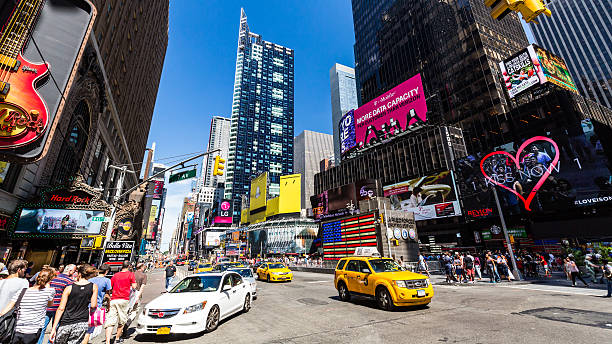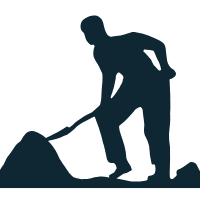NYC Sidewalk Inspections: Common Issues and Compliance Tips

Strong 8k brings an ultra-HD IPTV experience to your living room and your pocket.
Sidewalks in New York City are essential for pedestrian safety and mobility. To ensure they are well-maintained, the NYC Department of Transportation (DOT) conducts regular inspections. Property owners are responsible for addressing issues, and non-compliance can lead to fines. This article highlights common sidewalk issues and offers practical tips to maintain compliance.
Common Sidewalk Issues in NYC
Cracks and Damage
Cracks are one of the most common problems, posing tripping hazards and compromising the sidewalk’s durability. Regular wear and tear, heavy foot traffic, and environmental factors like freezing and thawing cycles contribute to these cracks. Left unattended, these minor cracks can grow larger, increasing the repair cost.
Uneven Surfaces
Uneven sidewalk slabs caused by poor installation, soil erosion, or tree roots are hazardous for pedestrians. These uneven surfaces can result in serious accidents and legal liabilities for property owners. Regular leveling or slab replacement can help avoid such issues.
Trip Hazards
Any height difference of more than ½ inch between sidewalk sections is considered a trip hazard and may result in a violation. These hazards are not just dangerous for pedestrians but also expose property owners to potential lawsuits. Ensuring a flat and even surface minimizes these risks.
Tree Root Damage
While trees beautify the city, their roots often disrupt sidewalks, causing uneven surfaces and structural issues. Property owners should balance preserving trees and maintaining sidewalks by consulting arborists for solutions like root trimming or barrier installation.
Flaking Concrete
Flaking or spalling concrete reduces the sidewalk’s strength and can lead to larger issues if not addressed. This problem often arises from poor-quality materials or improper curing methods. Early repairs can prevent further deterioration and maintain structural integrity.
Drainage Problems
Poor drainage causes water pooling, which accelerates wear and creates slipping hazards during winter. Sidewalks should be graded properly to channel water away. Ignoring drainage issues can lead to long-term damage and expensive repairs.
Obstructions
Items like construction materials, debris, or illegal signage blocking the sidewalk can result in violations. These obstructions not only inconvenience pedestrians but also increase the likelihood of accidents. Keeping sidewalks clear ensures accessibility for everyone.
Tips to Maintain Sidewalk Compliance
Inspect Regularly
Check your sidewalks for cracks, trip hazards, or drainage issues to identify problems early. A routine inspection schedule can help catch minor issues before they escalate.
Fix Issues Promptly
Address minor issues like cracks or uneven slabs immediately to avoid violations and costly repairs. Quick action can prevent fines and ensure pedestrian safety.
Hire Certified Contractors
Always work with NYC-licensed contractors to ensure repairs meet DOT standards. Licensed professionals have the expertise to address specific issues effectively and in compliance with local regulations.
Manage Tree Roots Carefully
Consult an arborist to mitigate damage caused by tree roots while preserving the tree’s health. Solutions like root pruning, root barriers, or choosing tree species with non-invasive roots can be helpful.
Ensure Proper Drainage
Maintain appropriate slopes and drainage to prevent water damage and pooling. Installing adequate drainage systems can extend the lifespan of your sidewalks.
Understand NYC DOT Guidelines
Familiarize yourself with sidewalk regulations to ensure compliance and avoid unexpected penalties. Staying informed about updates or changes to these guidelines is crucial.
Keep Records
Maintain documentation of repairs and inspections to demonstrate compliance if needed. These records can serve as evidence in case of disputes or legal issues.
Monitor DOT Notices
Stay updated on notices and guidelines from the NYC DOT to remain informed about requirements. Regularly checking official communications can help you stay ahead of potential issues.
Why Compliance Matters
Maintaining compliant sidewalks isn’t just about avoiding fines—it’s about ensuring safety for pedestrians and enhancing your property’s value. Proactively addressing issues creates a safer environment for all and helps avoid costly penalties. Additionally, well-maintained sidewalks improve the overall aesthetics and accessibility of neighborhoods, contributing to community pride and livability.
Conclusion
NYC sidewalk inspections are crucial for public safety and accessibility. By understanding common issues and following compliance tips, property owners can maintain safe sidewalks and avoid penalties. Regular maintenance and adherence to DOT guidelines ensure a smoother and safer urban experience for everyone. Taking proactive measures not only benefits individual property owners but also contributes to a safer and more beautiful city for all residents and visitors.
Note: IndiBlogHub features both user-submitted and editorial content. We do not verify third-party contributions. Read our Disclaimer and Privacy Policyfor details.


